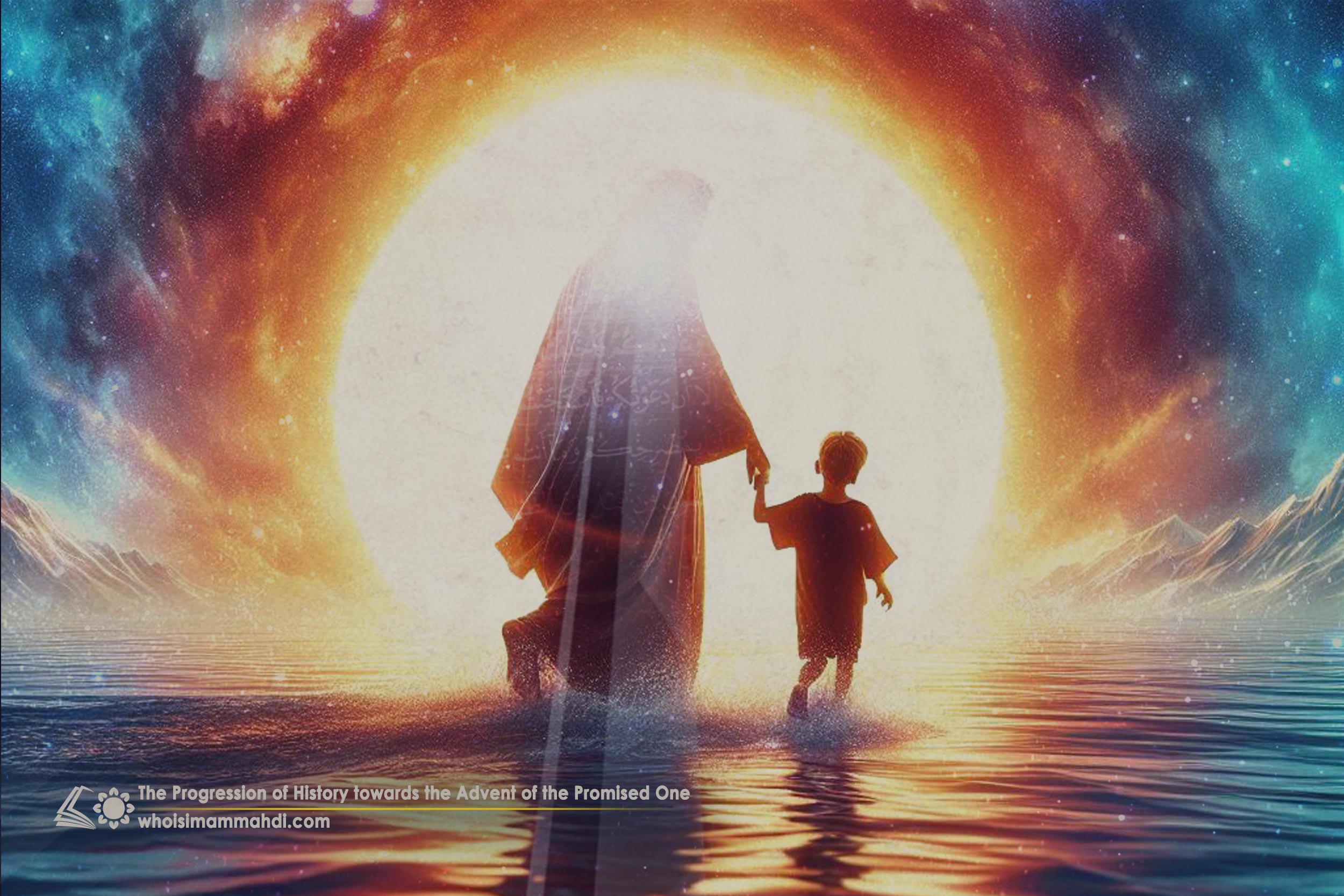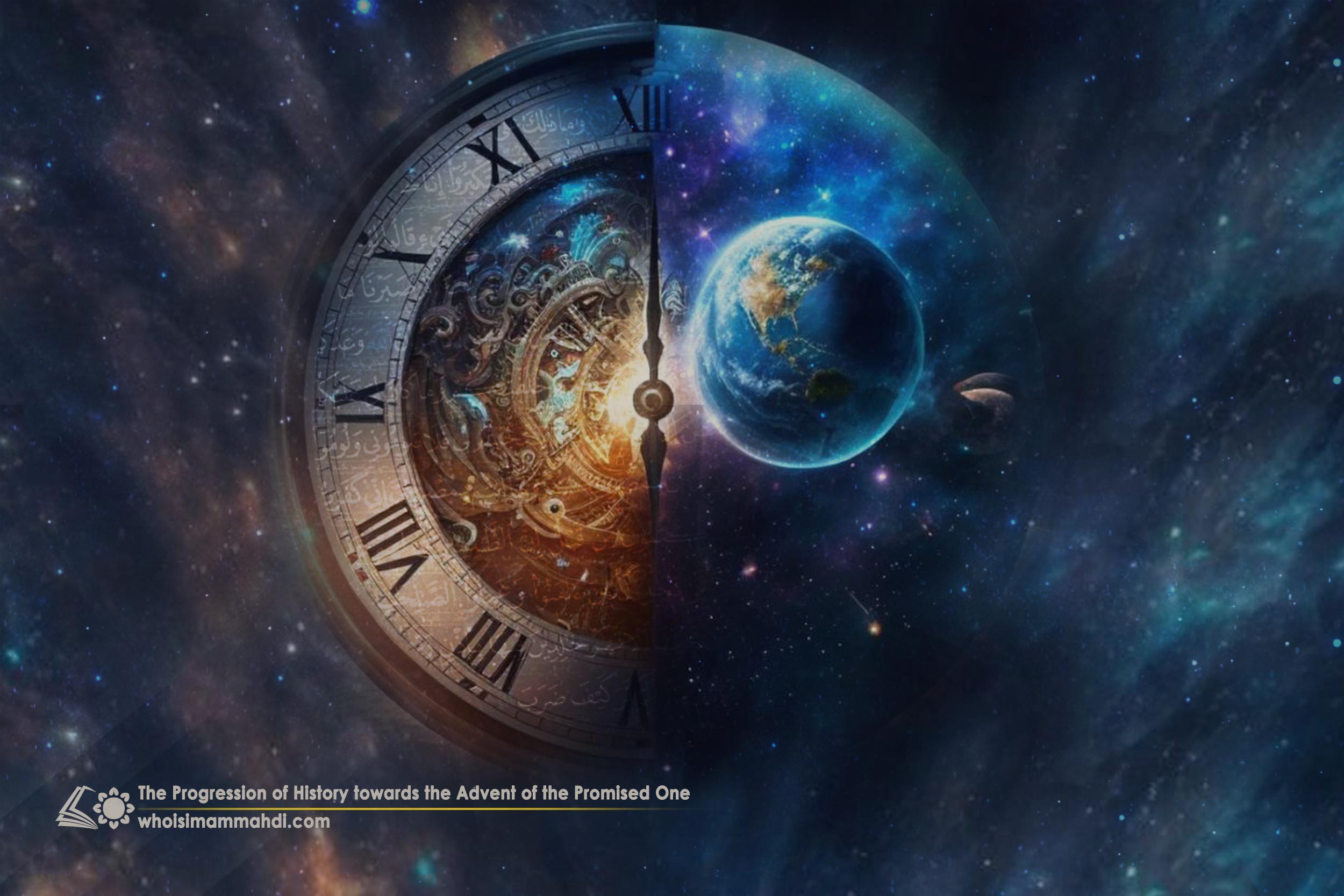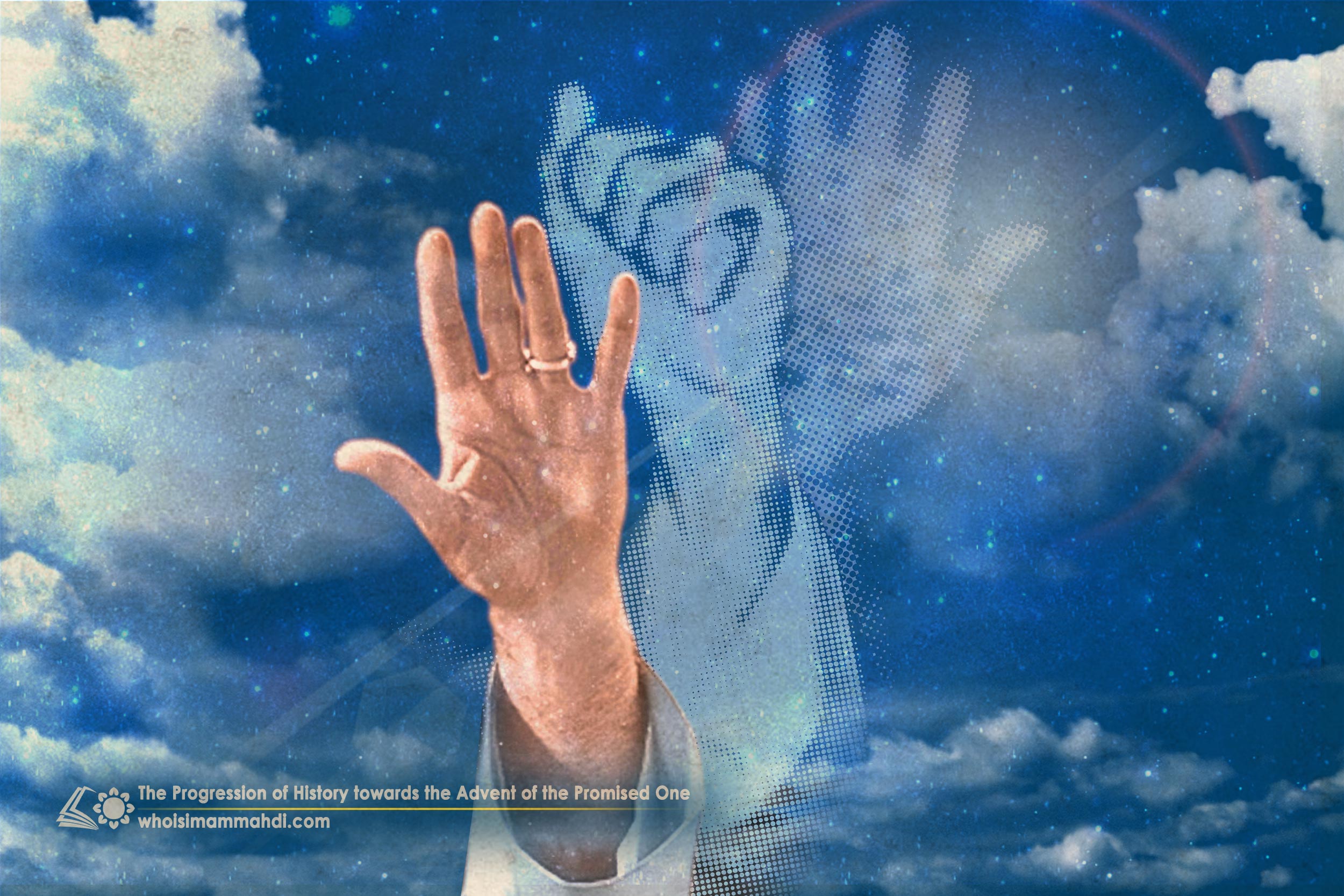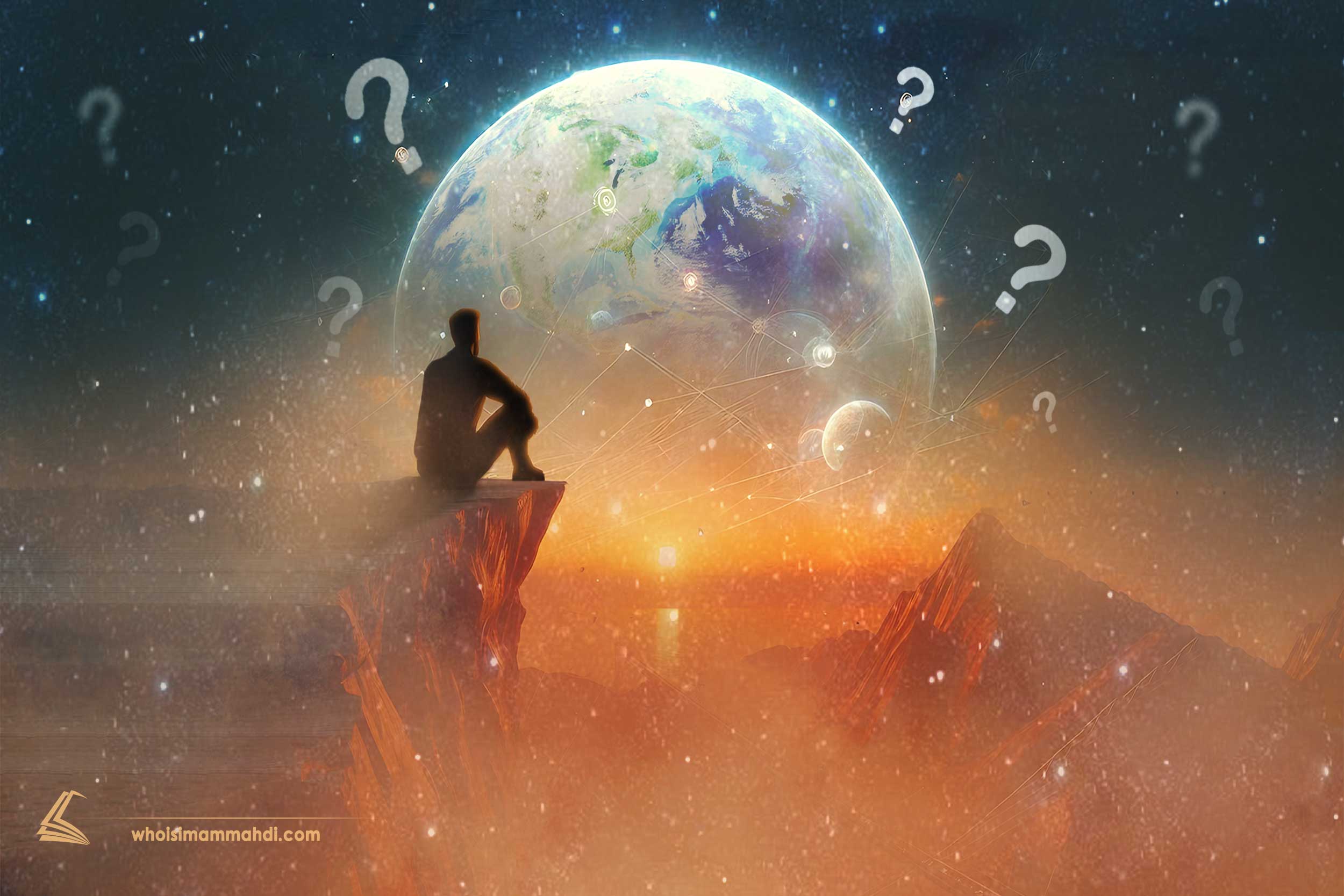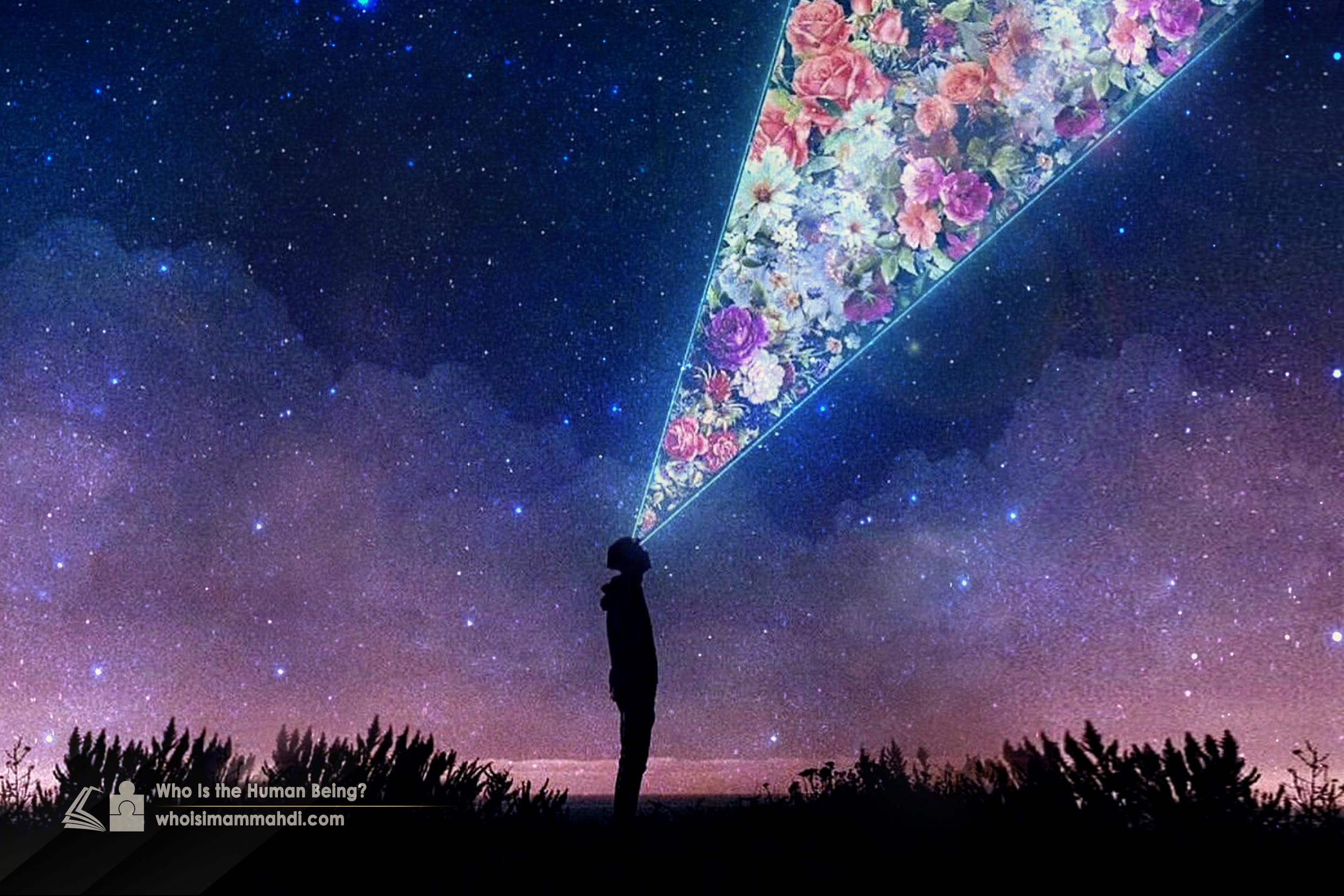What Are the Attributes of Existence? Types of Existence and Their Relationship with Allah
Do I exist? Is there a boundary between being and non-being?
Where does my existence begin, and where does it continue to?
As a being, have you ever wondered about ‘existence’? Have you ever tried to understand the quality and type of your existential relationship with the realm of existence? These are questions that many curious minds ask themselves at some point in their lives. Philosophers take these questions a step further, exploring them in great depth and detail. Some of these questions include:
- What is existence, and how can we define it?
- What are the attributes of existence, and can it be limited?
- Where does existence begin, and where does it continue to?
- How do I relate to other beings?
We might think that understanding the attributes of existence is enough as much as it helps us answer our personal questions. However, in reality, understanding existence and its attributes is the key to uncovering many mysteries of the universe. It unveils the unknown aspects of human existence and the interconnection between different realms of existence. It also sheds light on what Allah is, when existence began, and how long it will continue, as well as how the relationship between the human, Allah, and other beings is defined.
In this lesson, we aim to examine the levels of existence in a comprehensive manner, explore the difference between non-existence and existence, and define the relationship between Allah and existence. Through understanding the attributes of existence, we will unravel the relationship between Allah and other creations.
Types of Existence
Existence has different attributes, the most important of which being having effects. In the realm of existence, there are different types of existence, which we will explain with an example.
Sensate Existence and Imaginal Existence
If you wear a ring, typically others can only perceive the ring through their eyes or sense of sight. However, you yourself both see and touch the ring. This means that your connection with the ring is established through both the sense of touch and sense of sight. In other words, you perceive the existence of the ring through both tactile and sight senses, which represent the lower level of existence known as sensate existence.
Now, if you hide the same ring in your fist, others are unable to see it, but they are aware of the presence of the ring in your hand. Essentially, the ring they perceive in this situation is the same as the previous one, but the faculty that informs them of the existence of the ring is no longer the sense of sight; it is a different form of existence known as the faculty of imagination.
The faculty of imagination eliminates the material aspect but preserves the shape, form, and size of an object, storing it in our memory. For example, we remember our home address through the faculty of imagination. What is perceived through our faculty of imagination is a form of existence that shows some effects. If we forget our home address, the face of our spouse or parents, it means our faculty of imagination is not functioning, and we can no longer live a normal life. Therefore, we have an imaginal existence that is even more important than sensate existence.
Estimative Existence
Imagine someone holding a child in his arms, kissing her, and pressing her against his chest. Seeing this, we recognize the existence of love and affection. But does this love and affection truly exist? We have stated that the presence of something is indicated by its capacity to have some effects. So when we see individuals who are willing to sacrifice themselves for the sake of their love for their spouse, children, or country, it means that love, affection, dignity, humility, honor, and similar emotions have an effect, and consequently, they exist.
However, the point here is that this type of existence is different from both material and imaginal existence because it lacks a physical form and is not as generalized as imaginal matters. It is dependent on something else, and as a result, more specific than imagination, such as love for our country, love for our spouse, and love for our mother which belong to us and are dependent on us. We refer to this type of existence as estimative existence which lacks matter and shape; it is personal and stronger than imaginal existence.
Indeed, the world is governed by these estimative realities. In fact, desires, hatreds, accomplishments, ideals, and earthly loves all fall under the realm of estimative matters, and engaging with them is often beautiful and lovely. We are willing to sacrifice our lives and possessions for the love of someone of the opposite gender, or we are ready to sell everything we have and even sacrifice our own lives to cure our child’s illness. But can we see or touch this love and affection? Can we envision a material form or shape for it?
In fact, one of the characteristics of estimative existence is that it lacks size, volume, and physical form, yet it really exists and shows its effects.
Intellective Existence
The next type of existence which is higher in level is the intellective one. It is nobler, more sacred, more effective, and stronger than estimative existence. One who pursues knowledge becomes a teacher and a scholar, and his knowledge expands, but his body mass, weight, or physical size remains unchanged. One of the characteristics of intellective existence is that it applies to an infinite number of individuals; that is, many people can acquire knowledge and become, for example, doctors or engineers, or learn a formula that has been discovered.
Knowledge shows its effects; therefore, it exists. We use knowledge to make cameras, clocks, spacecraft, airplanes, medicine, generate electricity, and more. However, we cannot directly show knowledge itself or the existence of intellect to someone. Universities elevate our intellective existence from undergraduate to graduate levels, such as Bachelor’s, Master’s, or Doctorate degrees, and nurture it. The more we strive, the more our existential capacity expands, enabling us to make further inventions and scientific discoveries.
Our cars, computers, and the tools we have are all made through knowledge, but where is knowledge itself? Can we physically show or observe it? In reality, knowledge resides within us, and a scientist is someone who, even if all his books were lost, has the ability to compile them and generate new knowledge.
Existence and Non-Existence Defined
The concept often contrasted with existence is the concept of non-existence and nothingness. However, the point here is that there is no such thing as non-existence. Non-existence means nothingness, and nothingness refers to something that does not exist. If non-existence existed, it would transform into existence and being! Therefore, we can say that existence is boundless and has no limits. If we look at the place we are sitting, we find no point where existence does not exist. Existence is infinite and does not end in any form of non-being.
It is impossible for existence to have an end or a limit. It is like imagining that non-existence exists beyond galaxies. If we say that existence comes to an end at a certain point, the question arises: What comes after that? Does something exist beyond existence? We have already stated that non-existence does not exist, so if there is still existence beyond existence, it means that the same existence continues. In other words, we conclude that existence cannot be limited by non-existence.
Inherent Qualities of Existence
The attributes of existence or the inherent qualities of existence are as follows:
- Existence is infinite in all its forms.
- Existence is infinite, and therefore, it is only one that manifests itself in various forms.
So all the objects we see are part of existence. Therefore, we have a unified existence. If there were two separate existences, there would necessarily have to be a border line between them. This border line is either existence or non-existence. It cannot be non-existence because non-existence does not exist. Therefore, it must be existence. If it is existence, then all three are existence, and their essence is the same. They may have different forms, but they all are existence. For example, there are three different forms of existence between our hand and our cell phone. The hand, the phone, and the air all exist, but they have different forms.
Existence is just one and indivisible. We cannot conceive of gaps or divisions within it, nor can we imagine a second existence. If we consider two separate existences, there must be something that distinguishes them from each other. As we mentioned before, if this separator is non-existence, it logically does not exist. And if it is existence, then we will have three distinct existences, each separated from the others by a separator, and this infinite chain of reasoning continues without reaching any conclusion. Therefore, we conclude that existence is just one and infinite. This oneness is the second characteristic of existence.
- The third characteristic of existence is that it has no beginning. We can observe this characteristic even within ourselves. There has never been a time when we did not exist, or in other words, our existence did not emerge from non-existence. Existence has no origin because if non-existence were to come before existence, we would face a contradiction. Non-existence does not exist, and something that does not exist cannot have any effects or bring something into existence. Similarly, if existence were to exist before existence itself, we cannot consider a beginning for it, as no matter how far back we go, we will not reach a point where we can identify the origin of existence. In reality, there is no starting point; existence is pre-eternal,[1] without a first cause or creator.
- Existence is endless; it means we cannot consider an end for existence. Existence is pre-eternal and eternal. Suppose you want to destroy something that exists, such as a building or a structure. No matter how hard you try, this structure does not completely disappear; it simply transforms from one form to another.
- All conceivable perfections, from inanimate and vegetative perfections to animal and intellective perfections, all exist in existence. We have stated that existence is infinite; therefore, it has no limits or boundaries. It is impossible for anything to go outside of existence. If something were to exit existence, it would either have to move to another existence or enter non-existence. However, since non-existence does not exist, it is impossible for anything to get outside of existence. Consequently, existence is absolutely self-sufficient, that is, there is nothing outside of existence that existence would depend on.
If we possess something, we no longer have a need to acquire it. This condition is referred to in philosophical terms as “the impossibility of acquiring what is already acquired.” Therefore, if everything exists within existence and there is nothing outside of it, existence is absolutely self-sufficient. A university professor never considers participating in literacy courses because he does not feel the need. However, someone who is illiterate may have such a desire because he feels the lack of literacy in himself.
So far, we have come to understand certain attributes of existence that clearly indicate it is infinite and only one. It does not have a beginning and an end. Furthermore, there is nothing outside of existence, and existence itself does not need anything external.
Limits of Existence
Existence, in all its forms, is endless. Whether it is material, imaginal, estimative, or intellective, all forms of existence are boundless and limitless. To better understand this concept, let us consider water. While chemically composed of oxygen and hydrogen atoms, when we look at water, we perceive it as water itself, not merely a collection of those atoms.
The same principle applies to existence. We recognize it as infinite, even though we, our surroundings, all living beings, planets, and everything else are within this existence. Existence is boundless in essence. Limitation is incompatible with the essence of existence, so there is nothing as limited existence. Existence, in all its forms, is infinite; that is, material, imaginal, estimative, and intellective forms of existence are all boundless and endless.
Discovering the Whatness of Allah and Supra-Rational Existence
The understanding we have acquired about existence is called “Allah,” the Most Blessed and the Most High. Allah is the existence which exists in everything. We extracted the concept of Allah from within ourselves. Our understanding of Allah and the attributes of existence can be defined as follows:
Allah is the Absolute Existence that is present everywhere; He is Infinite and just One, without a beginning and an end. He does not need anything, with no vacuum or partner.
Therefore, one of the implications of the saying, “Whoever knows oneself, knows his Lord,”[2] is that through contemplation, reasoning, and practice, we can come to know a being named Allah from within ourselves. We were already familiar with these attributes of existence, and we simply reviewed what we knew. This knowledge reminds us of something familiar that we engage with daily, and it is none other than Surah Tawheed, which is actually the identification card of God.
Surah Tawheed eloquently expresses that the beloved and deity we seek, even if we do not know its name, is infinite in knowledge, power, pleasure, existence, etc. We all desire infinity; we may even have no knowledge about the Infinite Existence, but we yearn for it and love it. In all dimensions of existence, we desire boundless perfections: infinite wealth, beauty, love, knowledge, and so on. The desire for infinity is an inherent quality of human existence, and no one can escape it. Our desire for infinity is only fulfilled through our love for and connection with God, but we sometimes wrongly identify the manifestation of this infinity and try to fulfill this desire by looking for worldly perfections.
Before all the names of Allah, there exists “Huwa,” which means “He.” When “He” is individuated and manifests Himself through His names and attributes, He takes the name of Allah and becomes distinct and comprehensible. Allah is the infinite existence itself. We refer to the existence present in all things as Allah. Therefore, contrary to common perception, Allah is not a being beyond galaxies, and cannot be separated from His creations. Imam Sadiq (PBUH) stated that most people create a god in their mind which conforms to their own understanding. There is no place where the true Allah does not exist. In other words, when we say Allah encompasses everything, it extends to every single thing, including electrons, protons, neutrons, and even smaller particles that are unknown to us.
The Relationship between Allah and His Creations
Allah is the very existence itself, and the attributes of existence reflect the attributes of Allah. If we want to examine the attributes of Existence or Allah, we would say:
- Allah encompasses everything; it means He is present everywhere and encompasses everything.
- Allah is within all things, but He is not mixed or blended with them.
- Outside of all things, there is nothing except Allah.
In other words, we cannot separate Allah from objects. Imam Ali (PBUH) said: “He is present in things but not mixed with them, and He is outside of them but not separate from them.” This means that Allah is outside of things but has no distance from them. We cannot say, for example, “These are the Earth, galaxies, and stars, and beyond all these, there exists someone whose name is Allah.” Allah is the Infinite Existence; He has a consistent presence everywhere, but with different manifestations.
The relationship between Allah and objects is similar to the relationship between our soul and our body. Can we say that we are inside our body or outside it? If the soul is within our body, then it should diminish if a part of the body is removed, whereas the soul is a unified entity. It is also not outside the body because if the soul were outside our body, our perception of ourselves would be different. For example, we would see ourselves from above or opposite, similar to how we look at other objects.
It is important to note that the presence of a container and its contents is not always necessary; rather, in this context, a different kind of relationship is established, resembling the relationship we have with our own estimations and imaginations. In this relationship, there is no inside or outside, but rather a sense of attachment. The relationship between Allah and creation is also a relationship of attachment; it means all creation is the manifestation of Allah.
As mentioned earlier, the notion of being outside of existence is impossible. Therefore, the idea that God sits above the heavens and creates beings outside of Himself is an impossible concept. This notion limits existence because a God who is outside of Himself is limited.
Another question may arise here: If God has created everything, then who created God? However, in reality, God is the one for whom there is no beginning and end. If it were supposed that someone brought God into existence, the next question would be who created that someone, and this line of questioning would continue infinitely. Yet, God is the one who is not brought into existence by another. God is the Absolute and Infinite Existence that has no origin, as we have previously discussed in the attributes of existence.
The Whatness of Creations
As we have previously discussed, nothing goes outside of Existence and Allah. The question that arises is: What is the relationship between created beings and Allah? In fact, created beings are manifestations and reflections of Allah. The Quran refers to created beings as the “face (form)”[3] of Allah. The face of Allah signifies that every created being’s face represents a face of Allah. However, the manifestation is different from the essence. For example, if a person undergoes significant changes in their appearance, we may no longer recognize her, but her essence remains unchanged. The essence is not identical to the manifestation and can have infinite manifestations for itself.
Therefore, all created beings are manifestations of God; they are the faces through which God reveals Himself to us. “So wherever you [might] turn, there is the Face of Allah.”[4] We are constantly faced with infinite manifestations of God, so “Is there any doubt about [the existence of] Allah?” The truth is that the Allah whose characteristics we have discussed cannot be doubted. It is better to say that there is no possibility to doubt the true Allah.
Our Existence Depends on Allah
We are manifestations of Allah, and every dimension of our existence depends on Him. To understand our relationship with Allah, we can draw upon our relationship with our own imagination because our relationship with Allah is similar to our mental existence’s relationship with us. As mentioned before, our imaginations have effects, and they are real. As long as we think about something, we give it life, and when we let go of that imagination, it becomes annihilated in us. This imagination exists, and if we choose, we can bring it forth again. For example, imagine your childhood home in your mind and now let go of that image and imagine your school. Can you bring back the image of your childhood home if you want to? The answer is definitely yes, because the childhood home is alive in your imagination, but it has become annihilated in you, and you can recall it whenever you wish. As long as we hold our childhood home in our imagination, we give it life, and this is exactly like Allah’s relationship with us. It means that just as our imagination depends on us, we are constantly receiving blessings and life from the Most High.
We are constantly given existence, and if God wills, there will no longer be any face of us. In that state, we become annihilated and return to Existence. One of the names of Allah is Everlasting,[5] indicating that His grace and attention towards us are perpetual. The creation of Allah is not mechanical, like a builder constructing a house, completing their work, and leaving the structure to stand on its own even after his death. Our relationship with God is of a different nature. We are always receiving blessings from Him, and if His attention were to be withdrawn for a moment, we would cease to exist entirely.
Everything is dependent on the will and grace of Allah, and He is even closer to us than we are to ourselves, just as we are closer to our own mental existence than itself and can do anything we desire with it. The relationship of Allah with us is likewise.
In this lesson, we discussed the attributes of existence. We stated that existence, in all its forms, is infinite and just one. It has no beginning and no end. Last but not least, existence encompasses every perfection we can think of, therefore, it is absolutely self-sufficient. That existence is called Allah, and He possesses all the attributes of existence. Allah is the existence that exists in everything, and created beings are His manifestations. Our relationship with Allah is such that we are constantly receiving existence and blessings from Him. In other words, our existence is dependent on Allah.
[1]. Azali
[2]. Prophet Muhammad
[3]. Wajh
[4]. Quran, 2:115
[5]. Da’im



